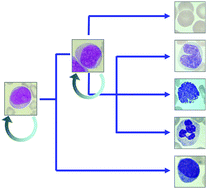From genes to cells to tissues—modelling the haematopoietic system†
Abstract

- This article is part of the themed collection: Computational and systems biology
* Corresponding authors
a
Haematopoietic Stem Cell Laboratory, Cambridge Institute for Medical Research, Wellcome Trust/MRC Building, Hills Rd, Cambridge
Tel: +44 (0)1223 336822

 Please wait while we load your content...
Something went wrong. Try again?
Please wait while we load your content...
Something went wrong. Try again?
S. D. Foster, S. H. Oram, N. K. Wilson and B. Göttgens, Mol. BioSyst., 2009, 5, 1413 DOI: 10.1039/B907225J
To request permission to reproduce material from this article, please go to the Copyright Clearance Center request page.
If you are an author contributing to an RSC publication, you do not need to request permission provided correct acknowledgement is given.
If you are the author of this article, you do not need to request permission to reproduce figures and diagrams provided correct acknowledgement is given. If you want to reproduce the whole article in a third-party publication (excluding your thesis/dissertation for which permission is not required) please go to the Copyright Clearance Center request page.
Read more about how to correctly acknowledge RSC content.
 Fetching data from CrossRef.
Fetching data from CrossRef.
This may take some time to load.
Loading related content
